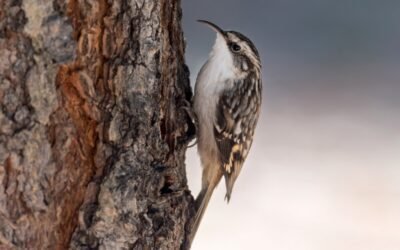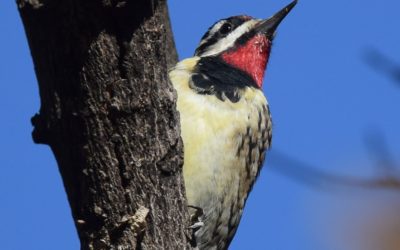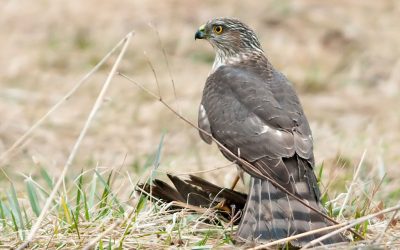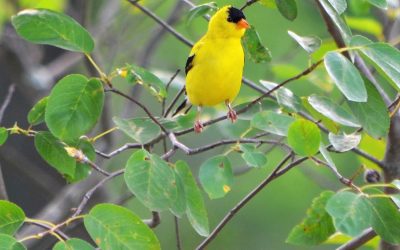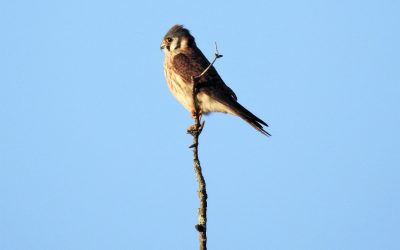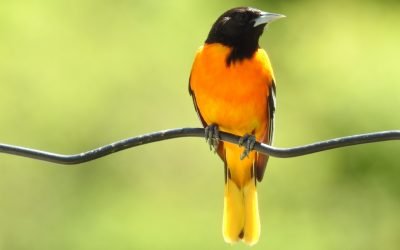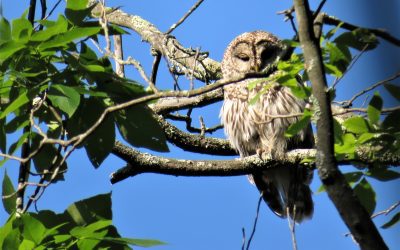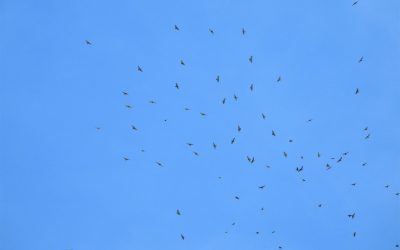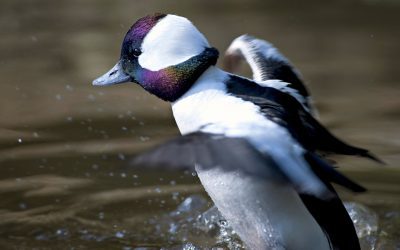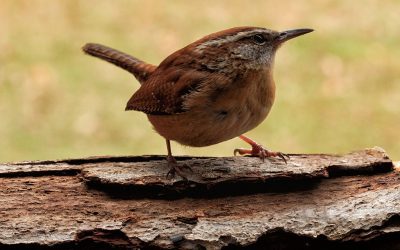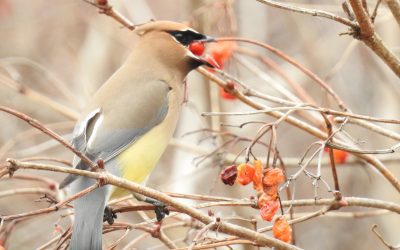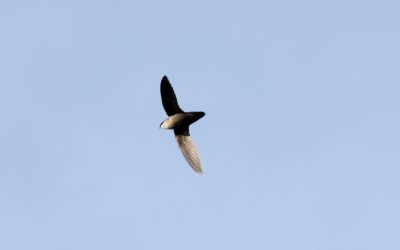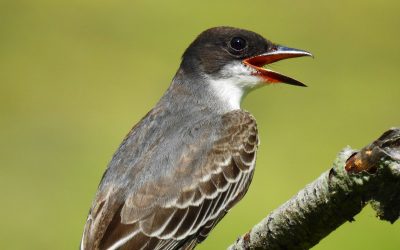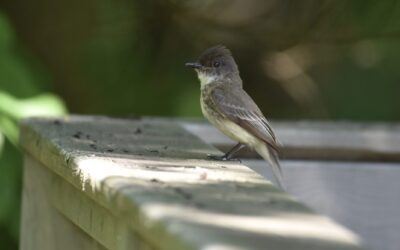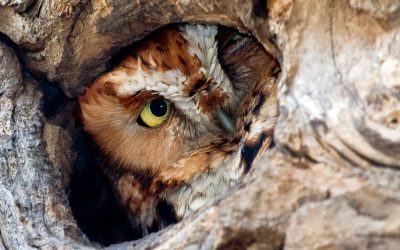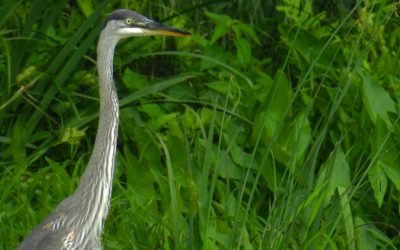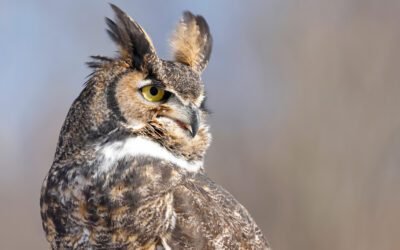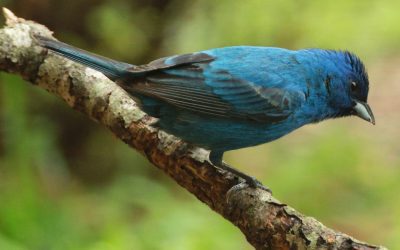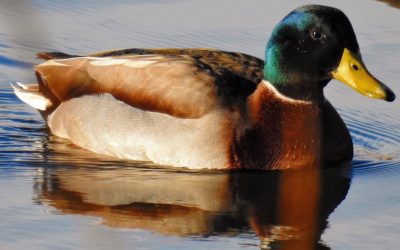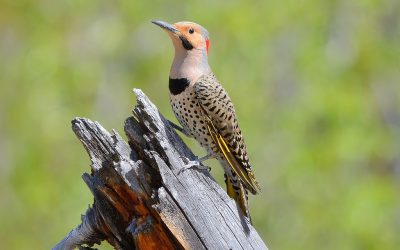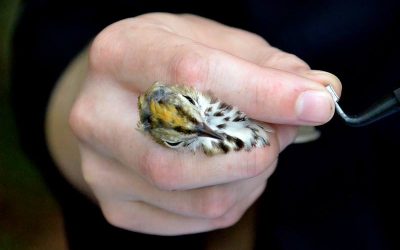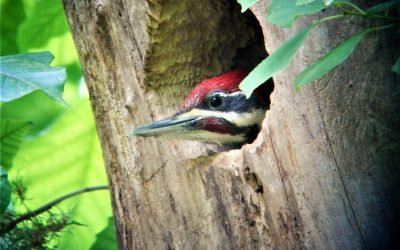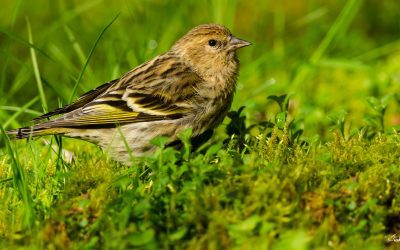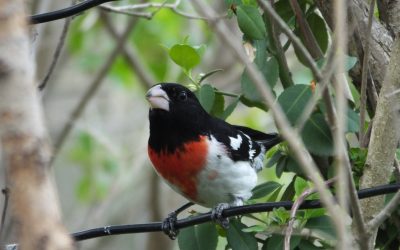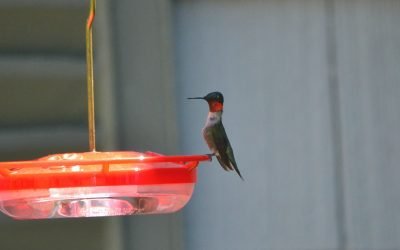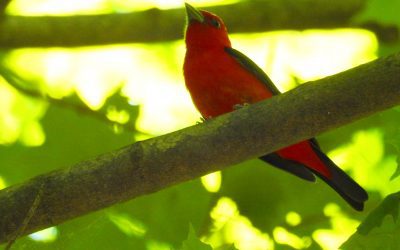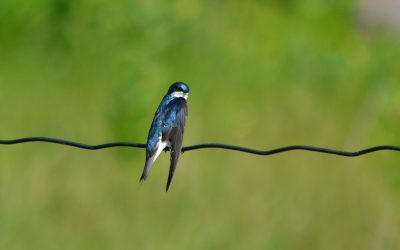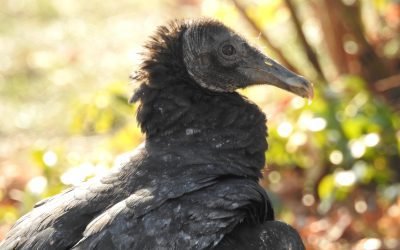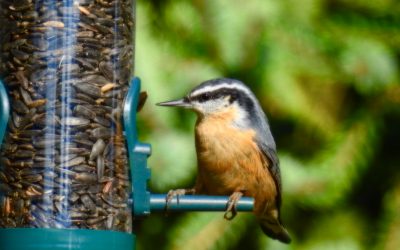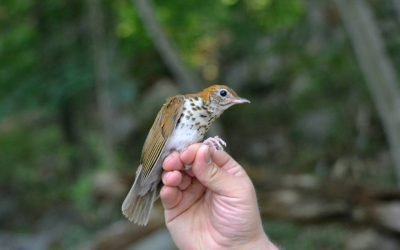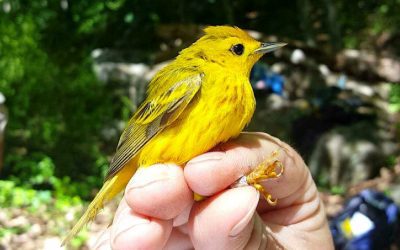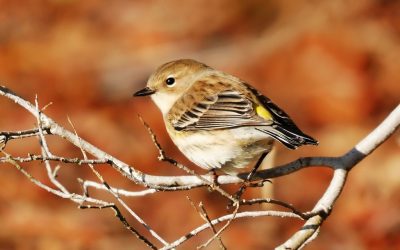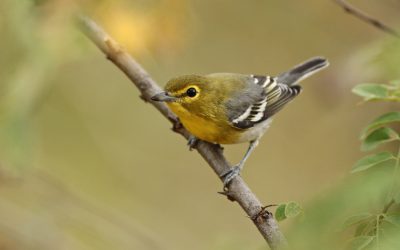About Birds
Male Red-winged Blackbird by Holly Ellerbusch
Enjoy this compilation of bird profiles by Bedford Audubon’s Naturalist, Tait Johansson.
Brown Creeper
The Brown Creeper (Certhia americana) is an inconspicuous and often overlooked member of our local avifauna.
Yellow-bellied Sapsucker
The Yellow-bellied Sapsucker (Sphyrapicus varius) is a colorful, distinctive woodpecker that frequents deciduous wood. Like most of our woodpeckers, adult sapsuckers are largely a patterned black and white, but with a bright red cap and (on males) a bright red...
10 Years of MAPS
Located in Hunt-Parker Sanctuary and established in 2009, Bedford Audubon Society’s MAPS station marks its 10th Anniversary this summer. MAPS, which stands for Monitoring Avian Productivity and Survivorship, is a continental-wide research effort that aims to...
Accipiters
Each fall, ridgetops throughout the northeastern United States play host to flights of migrating hawks. The most spectacular of these in our area are the flocks of Broad-winged Hawks that pass through in mid-September. But providing the most consistent flight...
American Crow & Raven
The American Crow (Corvus brachyrhynchos) is familiar to everyone. One of the most common and visible birds in our area, this Crow is found in almost every habitat, including towns, forests, fields, and suburbia. A less familiar bird to many is the Common Raven...
American Goldfinch
The American Goldfinch (Carduelis tristis) is one of our most familiar birds, especially to those who maintain bird feeders. This common inhabitant of shrubby fields, the edges of woods, and suburban areas is in spring through autumn, the male Goldfinch is a...
American Kestrel
One of the more common fall migrant raptors in eastern North America is the American Kestrel (Falco sparverius). This brightly-colored small falcon is now almost gone from Westchester and Putnam counties as a breeder, but continues to migrate through our area in good...
Baltimore & Orchard Oriole
One of the most notable avian events of May, a month with no shortage of such events, is the return of our two species of oriole from their Mexican and Central American wintering grounds. The arrival of such tropical-looking birds has always seemed to me an...
Barred Owl
The Barred Owl (Strix varia) is a common inhabitant of larger forest tracts and wooded wetlands in our area, though it, like many other nocturnal creatures, is seldom seen by humans. This species can be distinguished from our two other most commonly encountered...
Broad-winged Hawk
The autumn Broad-winged Hawk (Buteo platyperus) migration is an awe-inspiring event. Each September, vast numbers of these birds make their way from their breeding grounds in the deciduous forests to our north to their wintering grounds in Central and South America....
Bufflehead
The Bufflehead (Bucephala albeola), often known to hunters as the “butterball” for its ability to put on quantities of fat during fall migration, is a small, stubby, strikingly-plumaged duck common in our area in winter—as long as there is open water. The odd name is...
Carolina Wren
The Carolina Wren (Thryothorus ludovicianus) is an often-conspicuous presence, loudly announcing its presence to all within earshot with its loud, ringing song and a variety of distinctive call notes. At other times, this bird shows its retiring side, skulking in...
Cedar Waxwing
In a time when the populations of many songbird species in our part of the world are declining, one happy exception to this is the elegant Cedar Waxwing (Bombycilla cedrorum). One of a family consisting of only three species worldwide, our Waxwing is a common breeding...
Chimney Swift
The Chimney Swift (Chaetura pelagica), is truly a bird of the air, spending its days speeding aloft on thin, sickle-shaped wings, catching flying insects for food. This species, though declining in numbers, is still a fairly common sight in our area in summer. The...
Eastern Kingbird
Although not brightly colored, the Eastern Kingbird (Tyrannus tyrannus) is a conspicuous and flamboyant bird. This large flycatcher, about the size of a Catbird, is found commonly in our area in summer in fields, wetlands, and even urban parks. Except for a thin,...
Eastern Phoebe & Wood-Pewee
The Eastern Phoebe (Sayornis phoebe), is a familiar species to most in our area, often found building its nest of mud and moss under the eaves of houses and other buildings, especially near water. This bird, though not at all brightly colored, is a conspicuous one,...
Eastern Screech-Owl
The Eastern Screech-Owl (Megascops asio) is one of our more common birds. This fact may come as a surprise, since, like most owls, this species is seldom seen without a special effort made to find it. Its nocturnal habits and reticent nature conceal it from a mostly...
Great Blue Heron
Our largest North American heron, the Great Blue Heron (Ardea herodias), can reach a standing height of about four feet. Its impressive stature makes this species one of the birds most often noticed by the casual observer. Also contributing to its conspicuousness is...
Great Horned Owl
The Great Horned Owl (Bubo virginianus) is one of our most widely distributed birds. Almost our entire area is potential Great Horned Owl habitat. These fierce, powerful predators range over large areas in search of prey, which can range in size from insects to skunks...
Indigo Bunting
The Indigo Bunting (Passerina cyanea) is a denizen of dense areas of deciduous shrubbery and young trees throughout the spring and summer. Though it is more common than many people realize, its populations are declining in eastern North America, as are the numbers of...
Mallard & Black Duck
The ubiquitous Mallard (Anas platyrhynchos) is a familiar sight to most of us. Though it prefers shallow ponds and marshes for its habitat, it can turn up on almost any unfrozen body of water in our area at any time of the year. The drake is easily identified as a...
Northern Flicker
The Northern Flicker (Colaptes auratus), a large, colorful woodpecker, is a highly noticeable part of our avifauna. This is largely due to its frequenting open habitats, where its boldly patterned plumage and often-loud vocalizations draw human attention to it. While...
Ovenbird
There is a singer everyone has heard, Loud, a mid-summer and a mid-wood bird, Who makes the solid tree trunks sound again. Robert Frost, The Oven Bird The song of the Ovenbird (Seiurus aurocapilla) is one of the most familiar summer sounds of deciduous forest...
Pileated Woodpecker
The Pileated Woodpecker (Dryocopus pileatus) is a large, spectacular woodpecker about the size of a crow. Though relatively common in our area, it has large territories so it is not seen as often as one might think -- especially given its size and striking coloration....
Pine Siskin
The Pine Siskin (Carduelis pinus), a small, gregarious finch closely related to the American Goldfinch (Carduelis tristis), is an irregular visitor to our area. This fall (2008) has seen a tremendous movement of this species into the northeast, likely due to food...
Prairie Warbler
The tiny, green and gold Prairie Warbler (Setophaga discolor), contrary to its common name, is a bird not of grasslands, but of large areas of shrubland. In our area, this means powerline cuts and overgrown old fields with dense areas of shrubs or young trees,...
Rose-breasted Grosbeak
One of the first Neotropical migrants to arrive in southern New York every spring is the Rose-breasted Grosbeak (Pheucticus ludovicianus). In late April, this species completes its journey from its winter range (Mexico south to Ecuador) to our area, announcing...
Ruby-throated Hummingbird
The Ruby-throated Hummingbird (Archilochus colubris) is our most distinctive bird. Except for a few other hummingbird species that occur in our area only very rarely, it’s impossible to confuse this species with any other bird. About the only organisms one may mistake...
Scarlet Tanager
The male Scarlet Tanager (Piranga olivacea) is a stunning bird in spring and summer. The incandescent red feathers covering most of its body contrast sharply with the glossy black of its wings and tail. Although this bird is a common species in deciduous forests in...
Tree Swallow
The Tree Swallow (Tachycineta bicolor) is a familiar bird in our region, inhabiting open areas, usually near water, in the nesting season. Like our other swallows, it is an aerial insectivore, catching its prey almost exclusively on the wing, during the course...
Turkey Vulture & Black Vulture
The Turkey Vulture (Cathartes aura) and the Black Vulture (Coragyps atratus) are two of the most conspicuous birds in our area. Both vultures are large, mostly dark-colored birds which soar above the landscape searching for their primary food, carrion, making them...
Warblers
The May influx of warblers is one of the most glorious events of our spring bird migration. This quiet spectacle is essentially confined to eastern and central North America, as the west coast has far fewer warbler species. We have about 30 species of warblers come...
White- & Red-breasted Nuthatch
Nuthatches are droll little birds, entertaining backyard birdwatchers with their habit of making their way through life upside down as they search for tiny invertebrates and seeds hidden in crevices in the bark of trees. They are also frequent visitors to feeders...
Wood Thrush & Veery
Of the breeding birds of our area, probably the two most accomplished singers are the Wood Thrush (Hylocichla mustelina) and the Veery (Catharus fuscescens). These species are both brownish, secretive thrushes that mostly stay in the shadows of the woods, but...
Yellow Warbler
Many birders find warblers a difficult group of birds to identify. Fall, when warblers tend to have drab plumages, is the most challenging season for warbler identification. Even in spring, when their more colorful breeding plumages make them easier to distinguish,...
Yellow-rumped Warbler
Many birders find identifying fall warblers to be a tricky proposition. One good species to start with is the Yellow-rumped Warbler (Dendroica coronata) since it is probably the most common fall warbler in our area. The most consistently distinctive feature of this...
Yellow-throated Vireo
The Yellow-throated Vireo (Vireo flavifrons) is a bird often overlooked by more casual observers of the natural world, perhaps largely because it spends much of its time in the treetops, foraging for caterpillars and other invertebrates. Our most strikingly plumaged...

